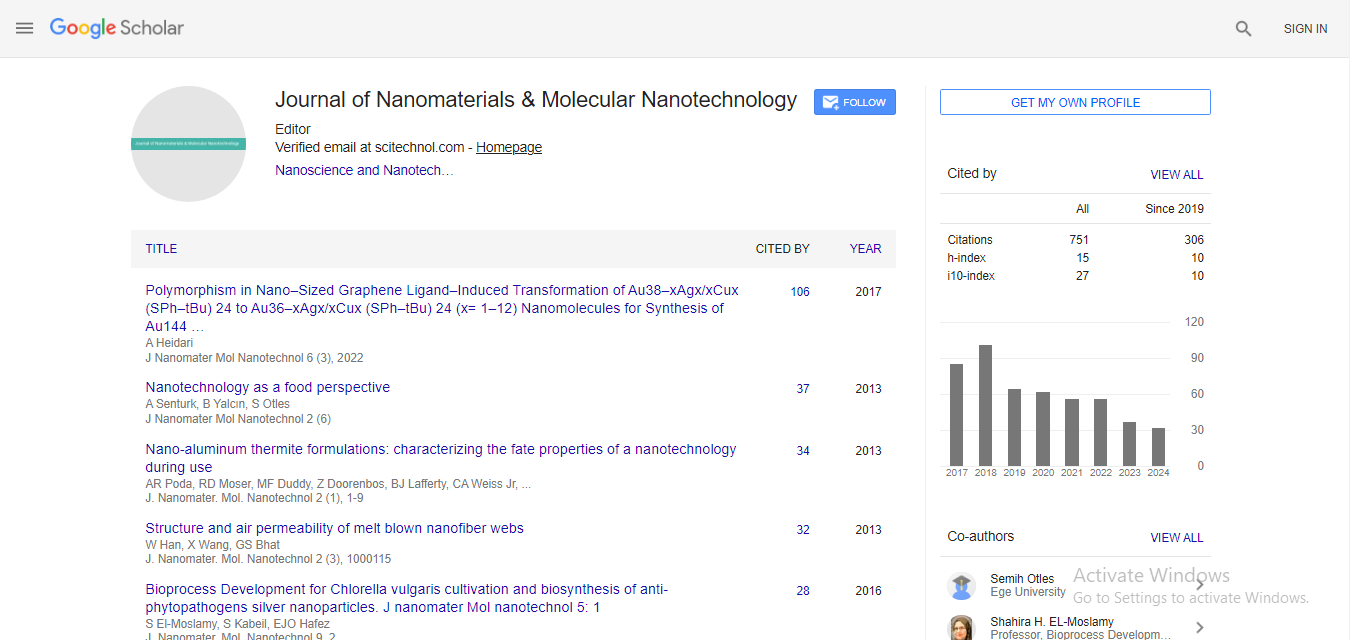High efficiency crystalline Si solar cells with simple structure fabricated with surface structure chemical transfer method
Hikaru Kobayashi
Osaka University, Japan
: J Nanomater Mol Nanotechnol
Abstract
We have developed a method to fabricate ultralow reflectance (≤3%) Si using the surface structure chemical transfer (SSCT) method which simply involves contact of Pt catalyst with Si wafers immersed in H2O2+HF solutions. The SSCT treatment forms a nanocrystalline Si layer with the porosity decreasing with the depth and thus with the refractive index increasing with the depth. Although the graded refractive index can achieve ultralow reflectance, the nanocrystalline Si layer possesses an extremely large surface area, resulting in a high surface recombination rate. We have developed a surface passivation method called PSG method which includes spin-coating of phosphosilicate glass (PSG) and heat treatment at ~900ºC. The heat treatment melts PSG, resulting in its penetration into nanopores in the nanocrsytalline Si layer, formation of chemical bonds with Si nanocrystals, and thus, elimination of surface states. We have fabricated <PSG+nanocrystalline Si layer/p-n junction/p-Si substrate> structure using the SSCT method and the PSG method. Despite the simple solar cell structure without antireflection coating, a high conversion efficiency of 19.8~20.4% has been achieved. The internal quantum efficiency (IQE) in the short wavelength region (≤400 nm) is nearly zero without passivation while it is greatly increased (e.g. 0.8 at 400 nm) by the PSG passivation method. Si nanocrystals in the nanocrystalline Si layer possess the same orientation, i.e. Si (100) orientation and thus, no grain boundaries are present in the nanocrsytalline Si layer. Therefore, recombination in the nanocrystalline Si layer is greatly suppressed. The nanocrystalline Si layer exhibits red photoluminescence, indicating that its band-gap energy increases due to the quantum confinement effect. The size of Si nanocrystals increases with the depth, resulting in the graded band-gap structure. Electron-hole pairs photo-generated in the nanocrsytalline Si layer are effectively separated by the graded band-gap structure, leading to the high IQE in the short wavelength region. Recent Publications 1. D Irishika, Y Onitsuka, K Imamura and H Kobayashi (2017) Improvement of conversion efficiency of silicon solar cells by submicron-textured rear reflector obtained by metal-assisted chemical etching. Wiley. Doi: 10.1002/solr.201700061. 2. K Imamura, D Irishika and H Kobayashi (2017) Surface nanocrystalline Si structure for highly efficient crystalline Si solar cells. Prog. Photovolt. 25(5):358-366. 3. K Imamura, D Irishika and H Kobayashi (2017) Mechanism of ultra-low reflectivity for nanocrystalline Si/crystalline Si structure formed by surface structure chemical transfer method. J. Appl. Phys. 121:013107. 4. K Imamura et al. (2017) Light trapping of crystalline Si solar cells by use of nanocrystalline Si layer plus pyramidal texture. Appl. Surf. Sci. 395:50-55. 5. K Imamura et al. (2015) Ultralow reflectivity and light trapping for crystalline Si solar cells by use of surface structure chemical transfer method on pyramidal textured surfaces. ECS Solid State Lett. 4:Q63-Q65
Biography
Hikaru Kobayashi received PhD Degree in Chemistry from Kyoto University, Kyoto, Japan, in 1981 and 1984, respectively. From 1984 to 1986, he was a Postdoctoral Research Associate in the Department of Physics and Astronomy, University of Pennsylvania. From 1986-1987, he was a Researcher in Matsushita Electronics Corporation Kyoto Research Center. From 1987 to 1990, he was a Research Associate in Department of Engineering Science, Osaka University. From 1990 to 1998, he has been an Associate Professor in Department of Chemistry and Faculty of Engineering Science same university where he was engaged in research on silicon solar cells, surface and interface science of silicon, and interface states of silicon surfaces; from 1998, he has been a Professor in the Institute of Scientific and Industrial Research same university. He is now engaged in research on silicon solar cells, hydrogen generation from Si nanopowder and Si nanopowder anode in Li ion batteries. h.kobayashi@sanken.osaka-u.ac.jp
 Spanish
Spanish  Chinese
Chinese  Russian
Russian  German
German  French
French  Japanese
Japanese  Portuguese
Portuguese  Hindi
Hindi 



